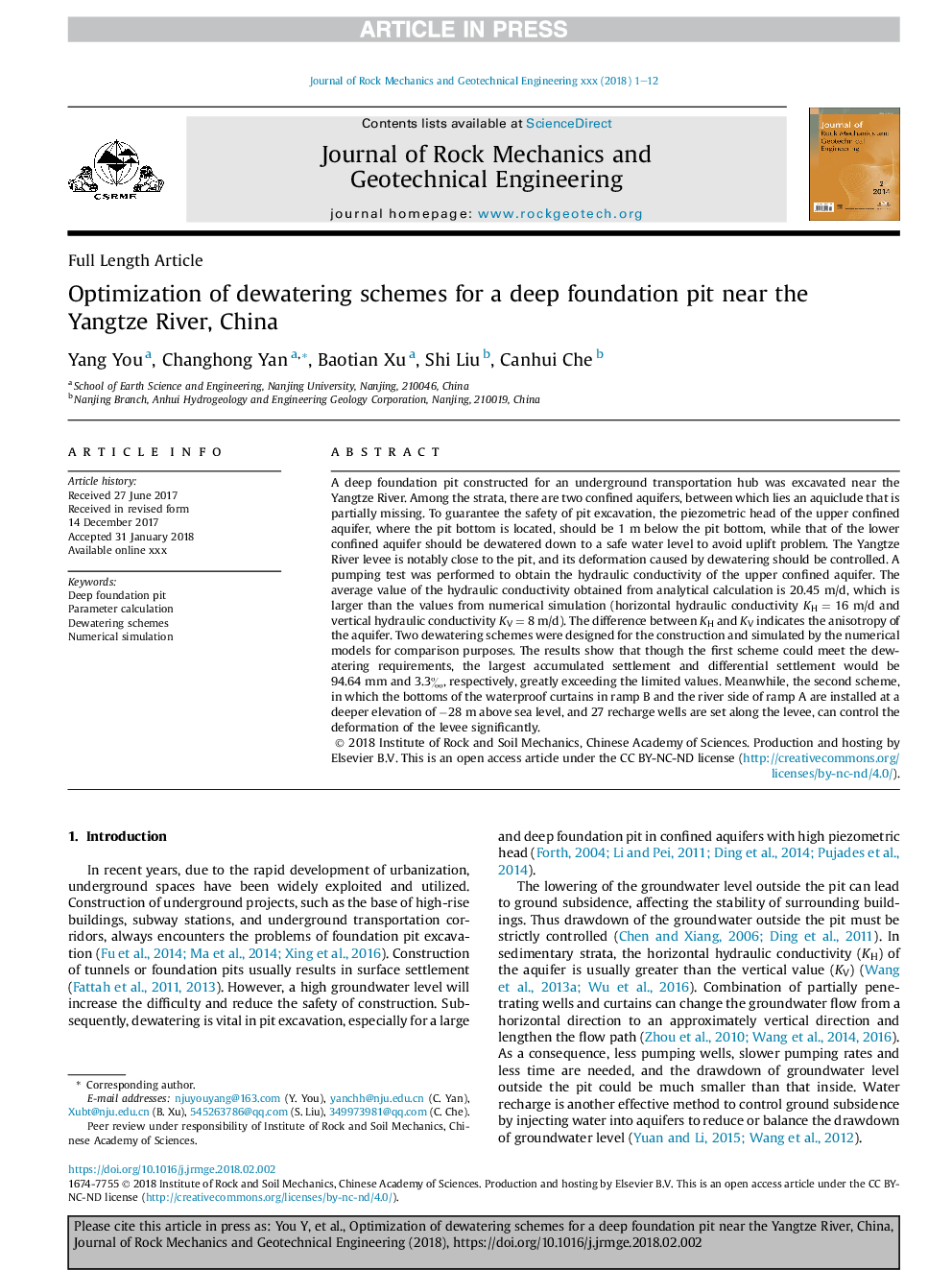| Article ID | Journal | Published Year | Pages | File Type |
|---|---|---|---|---|
| 6752230 | Journal of Rock Mechanics and Geotechnical Engineering | 2018 | 12 Pages |
Abstract
A deep foundation pit constructed for an underground transportation hub was excavated near the Yangtze River. Among the strata, there are two confined aquifers, between which lies an aquiclude that is partially missing. To guarantee the safety of pit excavation, the piezometric head of the upper confined aquifer, where the pit bottom is located, should be 1 m below the pit bottom, while that of the lower confined aquifer should be dewatered down to a safe water level to avoid uplift problem. The Yangtze River levee is notably close to the pit, and its deformation caused by dewatering should be controlled. A pumping test was performed to obtain the hydraulic conductivity of the upper confined aquifer. The average value of the hydraulic conductivity obtained from analytical calculation is 20.45 m/d, which is larger than the values from numerical simulation (horizontal hydraulic conductivity KH = 16 m/d and vertical hydraulic conductivity KV = 8 m/d). The difference between KH and KV indicates the anisotropy of the aquifer. Two dewatering schemes were designed for the construction and simulated by the numerical models for comparison purposes. The results show that though the first scheme could meet the dewatering requirements, the largest accumulated settlement and differential settlement would be 94.64 mm and 3.3â°, respectively, greatly exceeding the limited values. Meanwhile, the second scheme, in which the bottoms of the waterproof curtains in ramp B and the river side of ramp A are installed at a deeper elevation of â28 m above sea level, and 27 recharge wells are set along the levee, can control the deformation of the levee significantly.
Related Topics
Physical Sciences and Engineering
Earth and Planetary Sciences
Geotechnical Engineering and Engineering Geology
Authors
Yang You, Changhong Yan, Baotian Xu, Shi Liu, Canhui Che,
